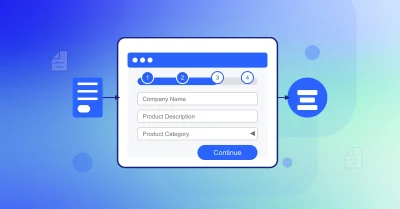CloudBlue offers an Omni Product Platform that unifies multiple channels. The subscription delivery automation platform enables companies to onboard a broad spectrum of products through direct, indirect, and internal channels.
It provides a highly customizable service to arrange various integrated business flows, including contract management, product information flow, ordering and fulfillment, subscription management, and resource usage reporting.
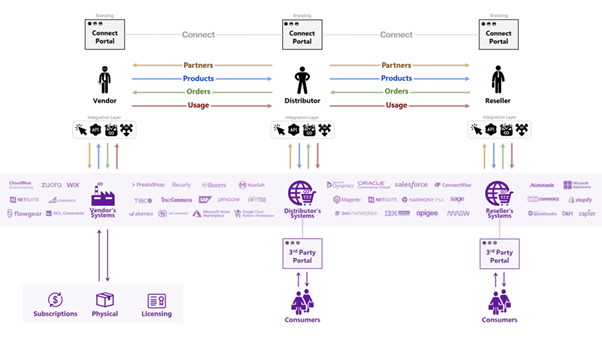
The CloudBlue platform enables its users to work in real-time with the transactions generated between distributors, resellers, and customers. By integrating with the platform, it will drastically reduce time for go-to-market operations and simultaneously eliminate any possible errors. By automating processes with business partners, CloudBlue helps to increase both the productivity and reliability of your organization.
Alongside the business purposes, integration with the CloudBlue platform provides the organization with an upper hand in decision making.
Another reason to integrate CloudBlue with the platforms is that all the actors have a shared vision of the objects and can interact with them.
Although CloudBlue offers a user interface that allows end-to-end operation, usually the actors involved have their own systems, these can be:
- Provisioning Platforms
- ERPs
- CRMs
- Marketplaces
- Ecommerce Platforms
The goal of CloudBlue is that these systems be integrated with less effort and cover all business scenarios.
How to connect your system with CloudBlue?
Integrating with CloudBlue is very easy.
CloudBlue offers many resources so that whether you are a vendor, distributor, or reseller integrating CloudBlue into your system is straightforward.
CloudBlue OPEN API
CloudBlue REST API provides you with the lowest-level access to the functionality of the CloudBlue Platform.
All other integration methods, such as Portals, SDKs and Extensions are built on top of the REST API layer.
CloudBlue REST APIs are available for use by vendors and distributors as schematically illustrated by the following diagram:
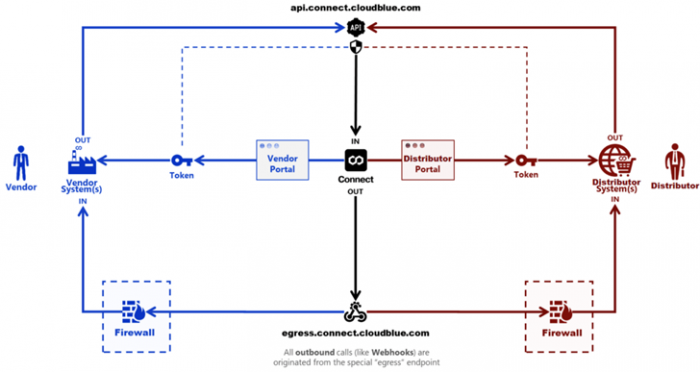
It’s possible to perform all of the operations in CloudBlue using the CloudBlue Open API.
Follow this link to find the Open API specifications describing the endpoints and definitions.
SDKs
While it’s always possible to address integration by using REST API, it is much easier to use one of our SDKs rather than implementing various routine tasks via API. The majority of provided CloudBlue Extensions are built by using one of our SDKs.
Catalog extension
CloudBlue and our partners offer a pool of pre-built extensions to connect commercial platforms like CRMs, ERPs, and CMSs with minimal effort.
The complete list of extensions can be found here.
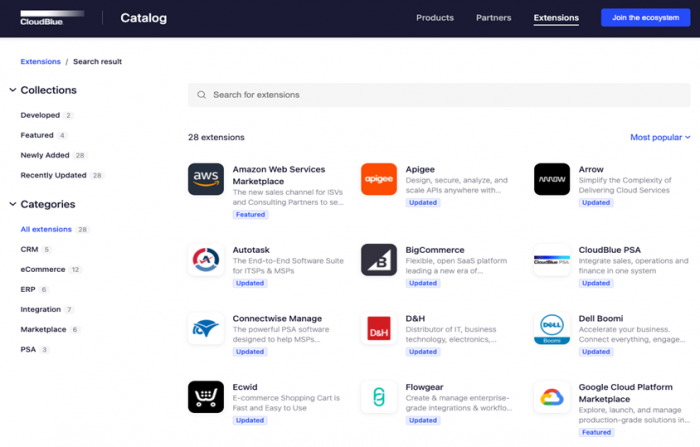
Extension as a Service
Usually, integrations require a specialized “middleware” service that represent an integration layer between third party systems and the CloudBlue platform.
Such middleware services are typically referred to as extensions. In general, extensions are deployed and implemented by system integration teams (System Integrators) that work in the context of a particular CloudBlue account.
These integration teams should also build an operational environment as schematically illustrated in the diagrams below.
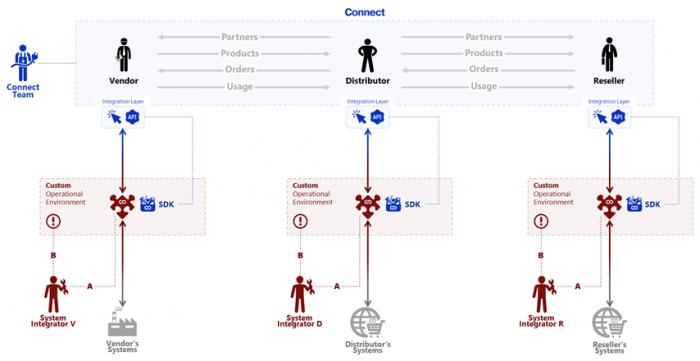
Furthermore, the effort required to implement an extension can be allocated into the following financial buckets:
Development Costs: Work needed to learn the system and develop business logic required to perform the integration operation. These costs are usually expected and don’t cause many issues at this point of time.
Operational Costs: Work required to build an operational environment and use it daily to run the integration itself.
These costs are mostly unexpected and cause issues since few system integration teams have relevant experience to accomplish this task at the start.
Therefore, CloudBlue presents the ultimate solution to drastically decrease operational costs for deploying and implementing required extensions.
The CloudBlue platform provides the users with an operational environment as a service, hence the term Extension as a Service
With Extension as a Service, it’s possible to build, test, run and manage the extension without the need of an infrastructure.
In the CloudBlue platform this capability is placed in the Devops Module.
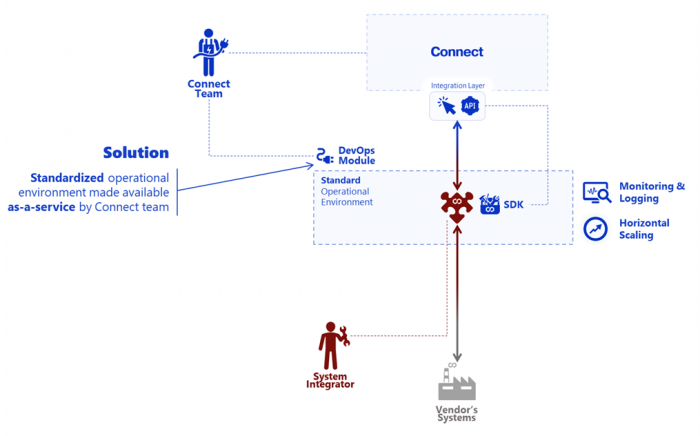
In additional this capability enables:
Monitoring & Logging: The DevOps module provides an out-of-the-box functionality that permits CloudBlue users to monitor their deployed extension on the platform.
Horizontal Scaling: Users can add more instances of machines to their existing pool of interconnected computer resources. Therefore, your system’s workload can be distributed across different machines.
Local and Cloud Modes: The DevOps module features Local and Cloud development modes. Specifically, the Local mode, as the name implies, is used to develop and deploy required middleware locally. The Cloud development mode is used for source code delivery and version management.
Deployment Environments: The DevOps module provides CloudBlue users with different deployment environments that can be easily managed via a single dashboard.
More info about Extension as a Service in this link







